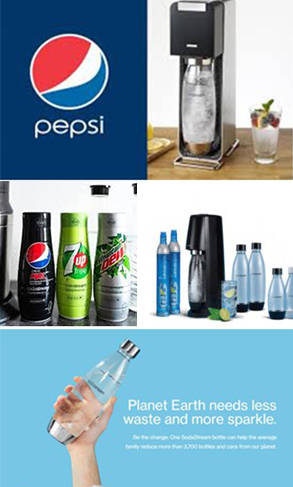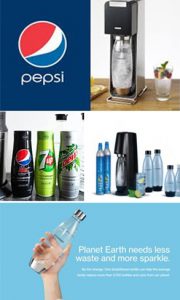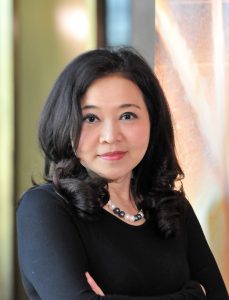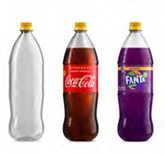
Circular Economy เศรษฐกิจหมุนเวียน ทางเลือก VS ทางรอด?

Circular Economy เศรษฐกิจหมุนเวียน
ทางเลือก VS ทางรอด?
Article By: Ms.Thananan Jindakitskulchai
Marketing Expert in Industrial Sector

In the previous article, the main content was about the principle and theory of circular economy to provide the beneficial information to the readers. I touched on the three major giant companies in beverage industry, Coca-Cola, Nestlé, and PepsiCo. In 2019, the net sales revenue for Nestlé was 92 Billion USD, with net sales revenue of 67 Billion USD for PepsiCo and Coca-Cola with net sales revenue of 37 Billion USD. The plastic consumption in 2018 was 1.7 million metric tons for Nestlé, 2.3 million metric tons for PepsiCo and 2.9 million metric tons for Coca-Cola.They signed off in the joint meeting of the United Nations Environment Program and the Ellen MacArthur Foundation in 2018 by giving their commitments that full 100% of the company products will use reusable, recyclable, or compostable plastic containers within 2025.
In this article, I would like to talk more about these three giant companies on their policy, business model, environment plan, KPI, and the outcome of their implementation plan in order to achieve these commitments as per this agreement.
Firstly, Policy setting and prioritizing the goal in each target of negative list with KPI and timeline. Each company assessed their resource and they will set all negative list, priorities for each goal with KPI and timeline, then communicate thru the organization for implementation and monitoring the progress against the plan. Nestlé announced their facilities worldwide to commit in eliminating single-use plastic items that cannot be recycled. These items will be replaced by materials that can be reused or easily recycled. The single-use plastic straws, single-use plastic cutlery, and single-use plastic bags will be eliminated by 2020. While Coca-Cola and PepsiCo plan to eliminate the single-use plastic straws by 2025. The same goal with different KPI and timeline is subject to each company resource and prioritization.
Secondly, material design is the key success factor for reusable, recyclable, or compostable of plastic packaging and containers. The Nestlé Institute of Packaging Sciences is collaborating with industrial partners to develop new packaging materials and solutions. e.g. to develop a biodegradable and recyclable packaging, food-grade recycled polypropylene. This includes new paper-based materials and compostable polymers. In order to eliminating plastic straws from their products, Nestlé uses alternative materials like paper, as well as innovative ‘straw-less’ designs. They removed the shrink film from their big packaging and reduce the unnecessary film e.g. bottle cap film. Nestlé in the US is testing reusable ice cream metal containers for Haagen-Dazs brand. As most of the paper cups are lined with plastic, and in most recycling markets, these materials are not easily separated for recovery. As a result, most end up in landfills. Each of this company have set up their goal to increase the usage of rPET, rPP food grade for their plastic containers e.g beverage bottles, sauce bottles as well as increase the recycle material for the product label, colorant and adhesive label. The change in color plastic bottle to be white or PET also increases the value of plastic waste sorted by recyclers. For example, Nestlé changed Maggi containers from yellow and red color to white. Coca-Cola in the UK replaced the current iconic green Sprite bottle with a clear pack in order to make it easier to recycle back into new drinking bottles, and planned to use the rPET to 50% by 2020. Coca-Cola globally aim to increase the usage of rPET significantly in each year e.g. Coca-Cola in Australia used all PET bottles made from 100% rPET at the end of 2019. The PepsiCo announced a new goal to reduce virgin PET use across their beverage portfolio by 35% relative to business as usual, by 2025. Compared to their 2018 baseline for beverage business, this equals to a 20% reduction on an absolute basis and the elimination of 2.5 million metric tons of cumulative virgin plastic. The Nestlé Waters is incorporating recycled PET (rPET) into its bottles where and when feasible, and will continue to increase rPET content in its bottles to 35% globally by 2025.
Thirdly, the use of innovation and technology to support business model for reusable, recyclable, or compostable of plastic packaging and containers. The PepsiCo acquired SodaStream, an alternative delivery mechanism for sparkling water using reusable bottles, for 3.2 billion USD, and continued to develop this business. Through the expansion of the SodaStream business, an estimated 67 billion plastic bottles will be avoided through 2025. This estimation is based on the volume of bottles that would have been used instead of a SodaStream machine and takes into account of the business’ projected growth. Currently products are available in Europe, USA and Canada.
The PepsiCo released Drinkfinity in the U.S. and Europe, after piloting the product in Brazil. To ensure recycling of the pods, they have introduced a program for U.S. consumers to mail used pods straight to a recycling facility in North America. They are working to set-up a similar recycling program in Europe as well to align with healthy consumer trends.
Coca-Cola Brazil invested USD 425 million for soda brands in unifying the design of the reusable PET bottles and expanding reuse infrastructure (bottle cleaning and refilling facilities) to scale up reusable packaging to 50% by 2030. The universal bottle initiative is a part of a business strategy to increase the share of reusable packaging (both glass and PET) in Latin America, which today represents 27% of sales.

Universal design for Reusable PET
Coca-Cola USA Food Service & On-Premise has joined The Closed Loop Partners (CLP) Next Generation Cup Challenge, a global open innovation initiative to identify sustainable solutions for single-use, hot and cold fiber cups. A new cup solution is designed to be recyclable or compostable, and when recycled or composted, produces quality materials that carry high economic value in recovery markets around the world. Each year, an estimated 250 billion fiber cups are distributed globally.
Coca-Cola has developed a special dispenser for water refills with the option of adding flavors and/or carbonation for a small fee. The machine is built using existing Coca-Cola technology for dispensing, chilling, and bag-in-box flavors combined with a user-friendly touch screen with a custom-built smartphone app for tracking DASANI PureFill locations and cashless payment. The technology is currently being piloted for other water brands as well.
The PepsiCo began to pilot a new hydration platform which enables consumers to dispense customized water options into refillable personal containers. This is similar to business model of DASANI PureFill. The PepsiCo also plots the Pepsi Spire program, smart-powered touch screen soda fountain to create customised drinks.
The Nestlé dispensers for Nescafé and Milo are already available in over 20 countries across Africa, Asia, Middle East and Latin America to replace use of single-dose packaging. They will launch new water dispensers, allowing consumers to fill their own reusable bottles.
Fourthly, sales channel thru distribution and delivery with reusable packaging and containers. These three giants Coca-Cola, Nestlé, and PepsiCo work with Loop organization. The Loopprovides services for the user by offering delivery and pickup of products and empty packaging, and also assists the brand owner by taking care of reverse logistics, cleaning, sanitation, and redistribution. Products can only appear on the Loop platform if they are reusable and can be recycled into the same products at their end-of-life. Nestlé is currently testing reusable ice cream containers for Haagen-Dazs brand in the US. Coca-Colain France is also a participant in the LOOP trial with Carre four and Terra cycle. PepsiCo in New York is participating with Tropicana Orange Juice and Quaker Cruesli cereal in reusable and refillable containers thru LOOP.
Nestlé is piloting an innovative bulk delivery system developed by MIWA in some of Nestlé shops in Switzerland. The MIWA concept is based on two loops: reusable capsule and reusable container. Within the delivery loop, MIWA provides standardized, smart-powered reusable capsules to producers who fill the capsules and send these through the supply chain for direct installing at retailers. The reusable capsules work in tandem with intelligent dispensing equipment, which ensures high product safety of in-store dispensing and facilitates the collection of product tracking information. Empty capsules are shipped back to MIWA for cleaning and redistribution to producers. The products are dispensed into reusable container that customers bring to the store.
This business model with the standardized capsules allows brand owners to outsource cleaning to MIWA while reducing packaging, label shrink film and etc. plus the cost of logistics.
In summary, the goal setting with the commitment by these three giants is to look forward to a huge support and improve good environment in order to save this planet as the good corporate citizens. The consumers demand the producers to incorporate solution to solve the plastic waste issue. To avoid the resistant from the consumers pressure on environment matter,the producers need to invest in new business model, research and technology for their containers and packaging include the non-packaging products. This will help producers to be competitive and to survive in their business. For the petrochemical supplier, the pressure of environmental matter and the implementation of circular economy in FMCG ( Fast Moving Consumer Goods) business, the banding of PVC, PVDC, PS, ePS will impact in demand of virgin plastic, which will decline significantly due to the increasing of replacement demand in rPET, reusable PET, rPP food grade. The petrochemical producers/supplier will need to understand the circular economy and to implement their models to their business in order to survive and to align with the consumer trend for the environmentally safe world.


